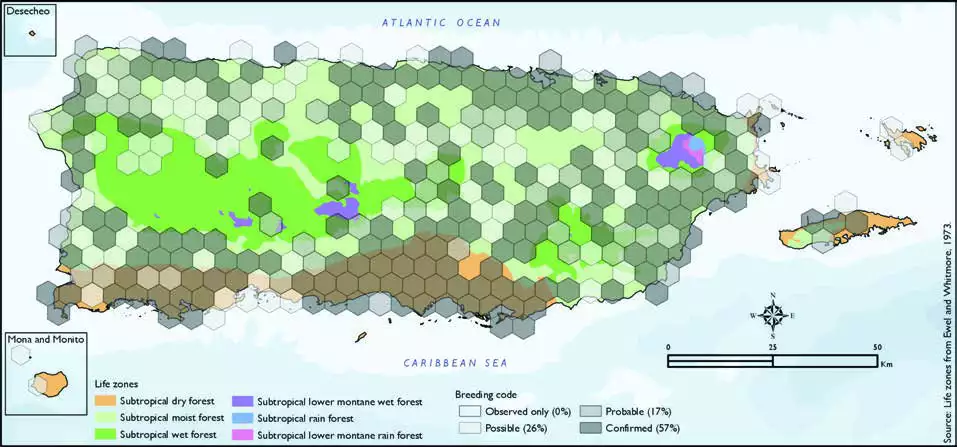House Sparrow
Description
The house sparrow (Passer domesticus) is a bird of the sparrow family Passeridae, found in most parts of the world. It is a small bird that has a typical length of 16 cm (6.3 in) and a mass of 24–39.5 g (0.85–1.39 oz). Females and young birds are coloured pale brown and grey, and males have brighter black, white, and brown markings. One of about 25 species in the genus Passer, the house sparrow is native to most of Europe, the Mediterranean Basin, and a large part of Asia. Its intentional or accidental introductions to many regions, including parts of Australasia, Africa, and the Americas, make it the most widely distributed wild bird.
Distribution & Habitat
The House Sparrow is native to Eurasia and Africa, and has been
introduced to the West Indies.
It is locally common in urban
areas throughout Puerto Rico,
and it has spread during the last
decades from the south coast
through the entire coastal plain
(Raffaele and others 1998). It also
occurs on Vieques where it is a
fairly common resident (Gemmill
2015), as well as Culebra and
Mona (Ventosa-Febles and others
2005). Its habitat consists mostly
of urban areas (Oberle 2018,
Raffaele and others 1998). The
atlas fieldwork yielded a total of
584 records within 306 hexagons
or 64 percent of the 479 total hexagons (see map). Of the 306
hexagons where this species was
found, breeding met the atlas
definition of confirmed in 57
percent (173) of the hexagons,
probable in 17 percent (53),
and possible in 26 percent (80)
(see map). House Sparrow distribution. The map shows the highest breeding code by hexagon and overlaying the ecological life zones in
Puerto Rico. Note: percentages may not total 100 due to rounding.

Breeding Habits
The House Sparrow generally builds a small cup-shaped bulky
nest that is often placed in trees
of gardens or parks, roofs, holes
in walls, light posts, pipes, or
any other type of cavity in urban
areas (Oberle 2018, Raffaele
and others 1998). Previously
published reports indicate that
breeding occurs throughout the 253House Sparrow/Gorrión Domésticoyear but mostly from March to September (Raffaele and others
1998). Atlas results show that
this species breeds throughout
the year with the most breeding
activity from March to June (see
chart). Overall, the breeding
activity peaks in June, and it
mostly takes place within the
subtropical moist forest life
zone (see chart). Results (see
table and map) show that this
species breeds mostly within the
subtropical moist forest life zone
(66 percent of the hexagons) but also in the subtropical dry
forest life zone (24 percent of
the hexagons) and at higher
elevations within the subtropical
wet forest life zone (10 percent
of the hexagons).
Conservation
The current population trend for the House Sparrow is described
as decreasing in many urban
areas of Europe (De Laet and
Summers-Smith 2007). This
species is currently listed as a species of least concern by the
IUCN (BirdLife International
2018). Locally, this species is not
listed in any of the threatened
categories of PRDNER and
USFWS. In Puerto Rico, the
House Sparrow has a protected
habitat in land of 11 percent or
826 km2 of the total area covered by the hexagons where evidence
of breeding was found for this
species (7318 km2).
Related Species
Family:
sparrow